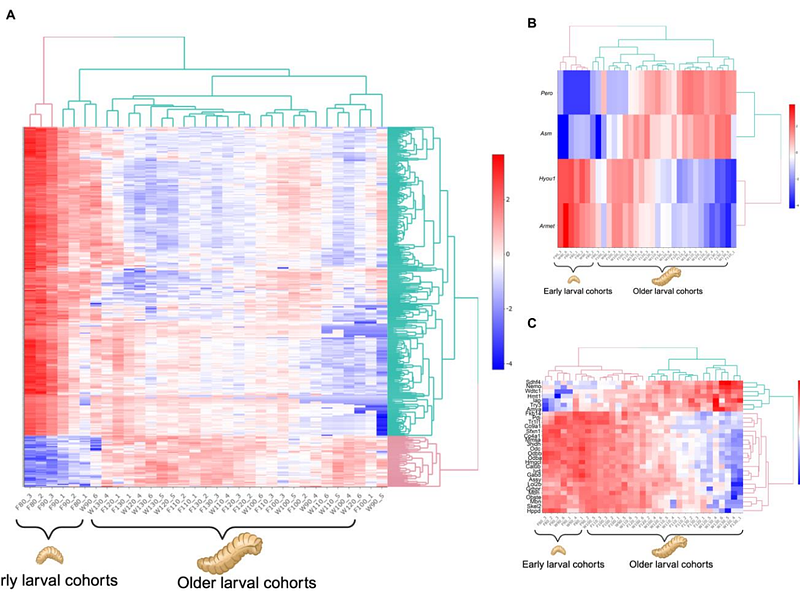Unraveling forensic timelines using molecular markers in Phormia regina maggots

Unraveling forensic timelines using molecular markers in Phormia regina maggots
Lin, S.-H.; Bellantuono, A. J.; Lopez, K.; Wells, J. D.; DeGennaro, M.
AbstractIn forensic entomology, estimating the time of death is critical and traditionally relies on changes in observable traits of carrion feeding insect larvae. Traits such as size, weight, and morphology can be used to predict the insect specimen age and help estimate the time since death. The blowfly Phormia regina is a key forensic insect, yet age estimation for older maggots in this species is particularly challenging due to the limited morphological changes in the late-stage larvae. To enhance precision, we employed transcriptomic profiling on blowfly maggots, aiming to identify genes as markers for time of death estimation. Our study characterized maggot development, reinforcing that weight and behavior cannot precisely determine age between 100 and 130 hours. We built a chromosomal scale annotated genome, establishing a reliable database for uncovering transcriptomic signatures during larval development. Applying differential gene expression analyses, weighted gene co-expression network analysis, and the generalized linear model, we identified nine candidate genes (Y5078, Y5076, agt2, ech1, dhb4, asm, gabd, acohc, Ivd) that delineate the age of otherwise indeterminate maggots. This research introduces a molecular approach to address a longstanding problem in forensic entomology and promises to increase precision in determining the time of death at a crime scene.